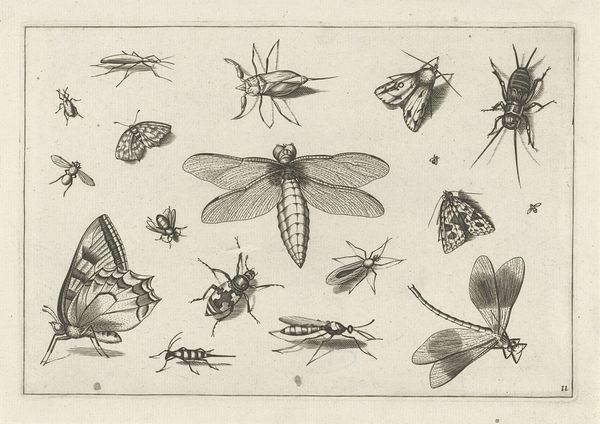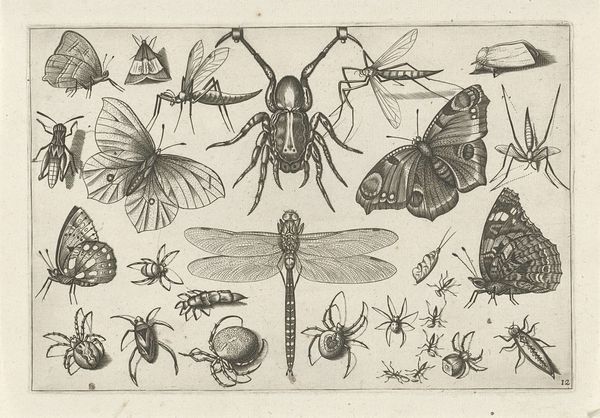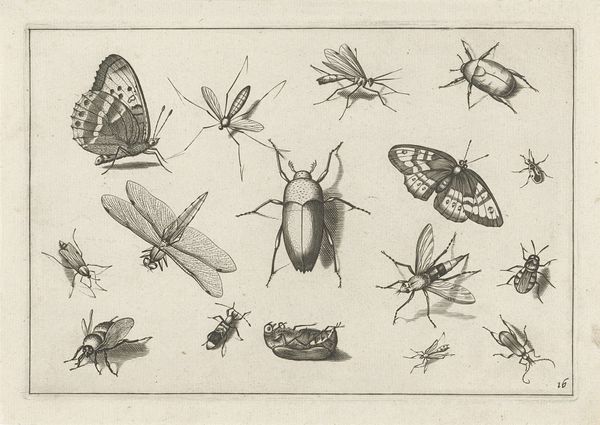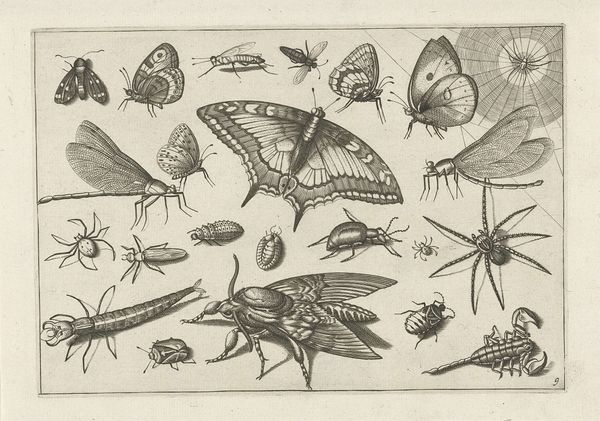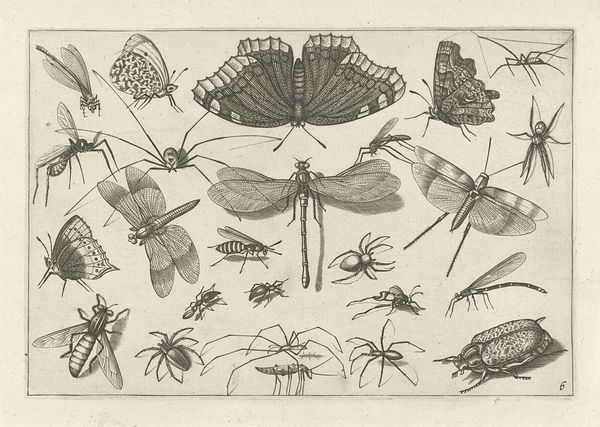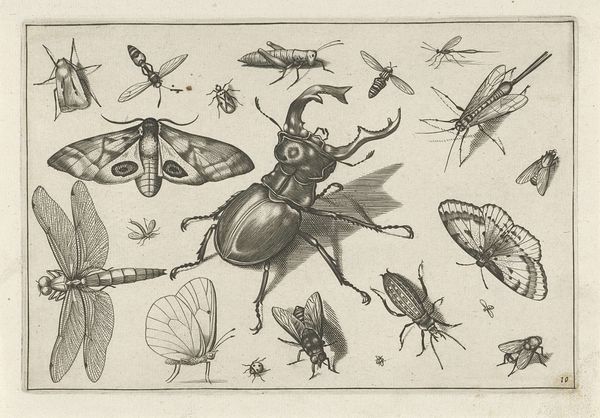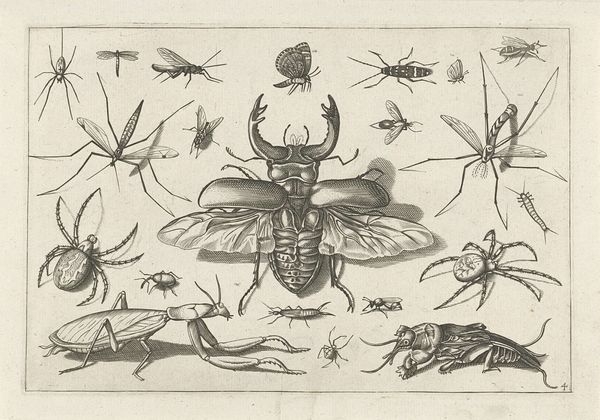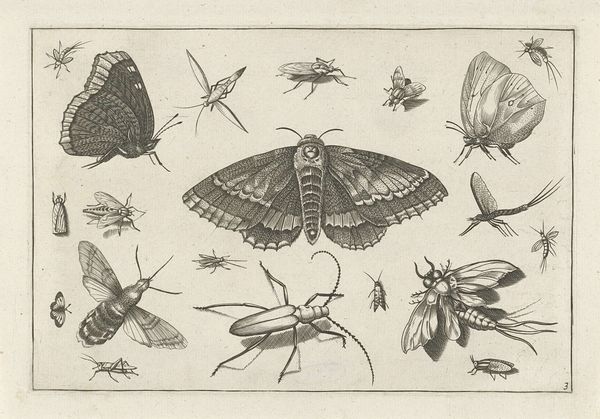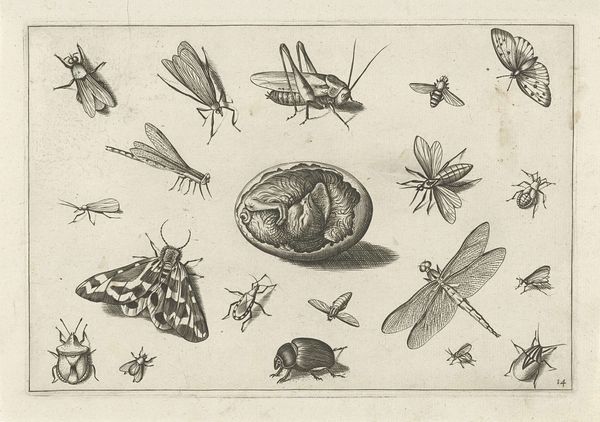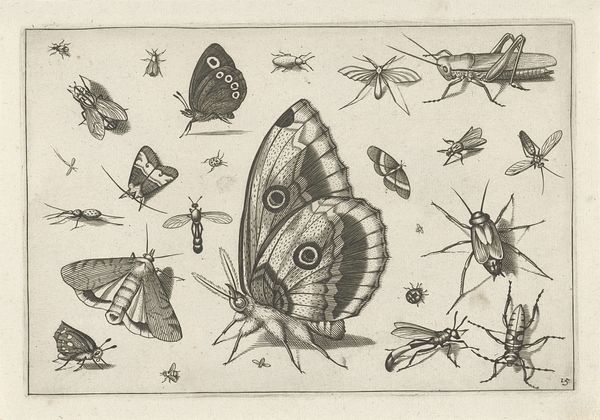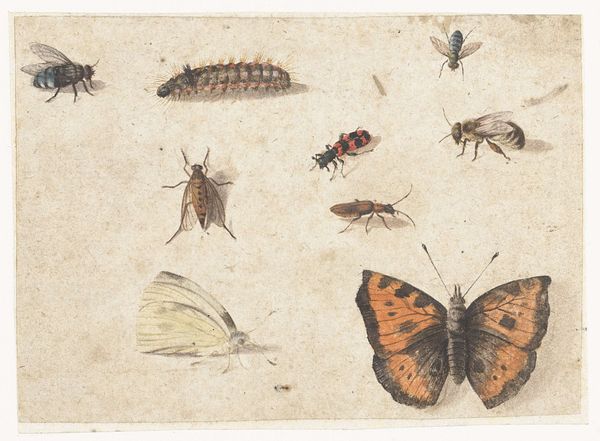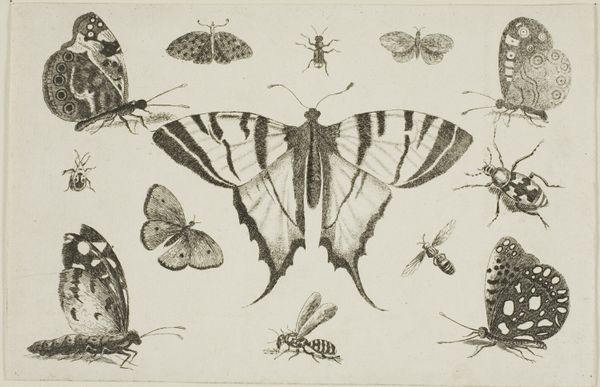
drawing, ink, pen
#
drawing
#
pen illustration
#
pen sketch
#
old engraving style
#
11_renaissance
#
ink
#
pen-ink sketch
#
pen work
#
sketchbook drawing
#
pen
#
sketchbook art
Dimensions: height 133 mm, width 197 mm
Copyright: Rijks Museum: Open Domain
Curator: Right in front of us we have Jacob Hoefnagel's "Insecten," created around 1630. It's a pen and ink drawing. Editor: My initial reaction? It's like an insect encyclopedia, painstakingly rendered, but also… a bit creepy. They seem frozen, pinned to the page. Curator: That's an interesting way to put it. Consider that Hoefnagel and other artists producing natural history illustrations like this played a key role in documenting and classifying the natural world. It's about the production of knowledge, of scientific inquiry, displayed through meticulous craftsmanship with pen and ink. Think of the labor involved. Editor: Absolutely, the precision is astonishing. It makes me wonder about the role these images played beyond science. Who was viewing them? Were they meant to be artistic displays of status? It feels as if they are elevated above just useful, educational material, and into the territory of luxury printmaking. Curator: It’s important to remember the socio-political backdrop. Hoefnagel worked at a time when the pursuit of knowledge and natural history was directly tied to European exploration and colonial expansion. Editor: Right. So, even these seemingly innocuous insects become implicated in that history. The drawing takes on a different weight. What was extracted from what region of the world to be captured in the rendering on the paper. Curator: Yes, they are products, as is the image itself. Think of the paper’s production. Or the ink itself. The material conditions underpin it. It asks a crucial question: How much are art and science tied together? Editor: Considering that, it is not only creepy, but a telling snapshot of a complex and, at times, uncomfortable moment in history. I have such different eyes now. Curator: Indeed, the material and historical dimensions enrich our understanding, moving beyond simple appreciation. Editor: Precisely. Thank you.
Comments
No comments
Be the first to comment and join the conversation on the ultimate creative platform.
